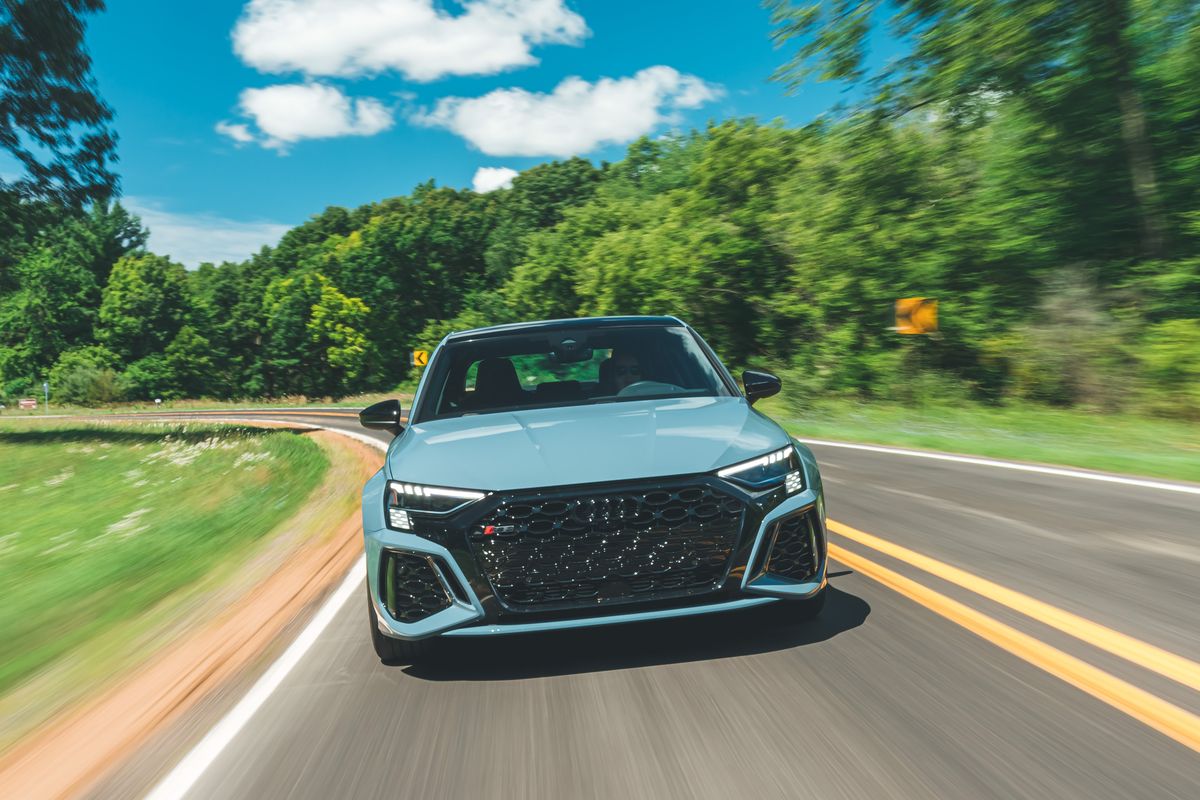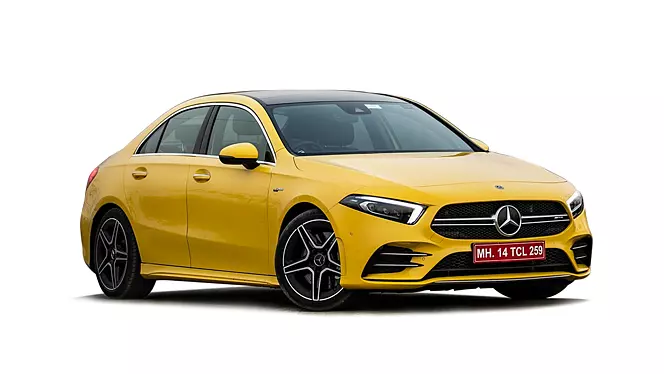Yes, the Audi RS3 has a drift mode. And yes, it allows even the most ham-fisted among us to participate in the sort of cackle-inducing hooliganism that was once exclusive to rear-wheel-drive cars. But really, the trick rear differential that the RS3 shares with the Volkswagen Golf R is of most benefit on the track, as the stocky sedan’s Nürburgring time of 7:40.8 convincingly suggests.
Though the genetics are undeniably obvious, the RS3 has been honed into an altogether different thing this time around, and it’s a lot more serious about extracting lap times. Its brutish looks send the message even before you drive it. Those uniquely flared fenders house 265-mm-section-width tires in the front and 245s in the back, up from the previous-generation RS3’s optional 255s and 235s, respectively. The people at Audi Sport put a lot of thought into making this thing turn. What you can’t see are the RS3’s specific spindles and hubs, front subframe, control arms, or anti-roll bars. Compared to the S3, the front track is two inches wider, and there’s an additional degree of front negative camber (along with an additional half degree of negative camber out back). So, if you were thinking you’d buy an S3 or a Golf R and do some mods here and there to make up the difference, you won’t.
Even if you got close, you’d still be down a cylinder and its half-liter of displacement—not to mention the 2.5-liter’s wonderful character. That Audi builds a five-cylinder at all probably should be celebrated, and this one’s good. Boasting a unique soundtrack and layout in defiance of this era of sameness, the weird and award-winning engine is turbocharged to 401 horsepower and 369 pound-feet—seven ponies more than in the previous model but 15 additional pound-feet. There’s a little turbo lag at low rpm—it’s nothing egregious, just not the tons-of-torque-right-now tune you’re familiar with from the brand’s boosted four-cylinder engines. In any case, the slight lull is more than made up for in the run to redline, where the RS3 pulls and pulls . . . and pulls . . . and pulls . . . until the upshift.
A seven-speed dual-clutch automatic is the only transmission offered. It’s beefier than the unit in the S3 and shares not a single gear ratio. We caught it a little behind the ball on downshifts more than a few times—it’s best to use the Manual mode if you’re chasing lap times. From there, an open differential sends torque to the front wheels as before, while at the other end of the prop shaft, two independent clutch packs replace the previous single Haldex clutch. By de-clutching the inside rear wheel, the system can effectively direct the rearward torque to the outside wheel, helping to mitigate understeer or instigate the aforementioned drifting antics in the RS Performance drive mode. As before, the front wheels are driven all the while.



